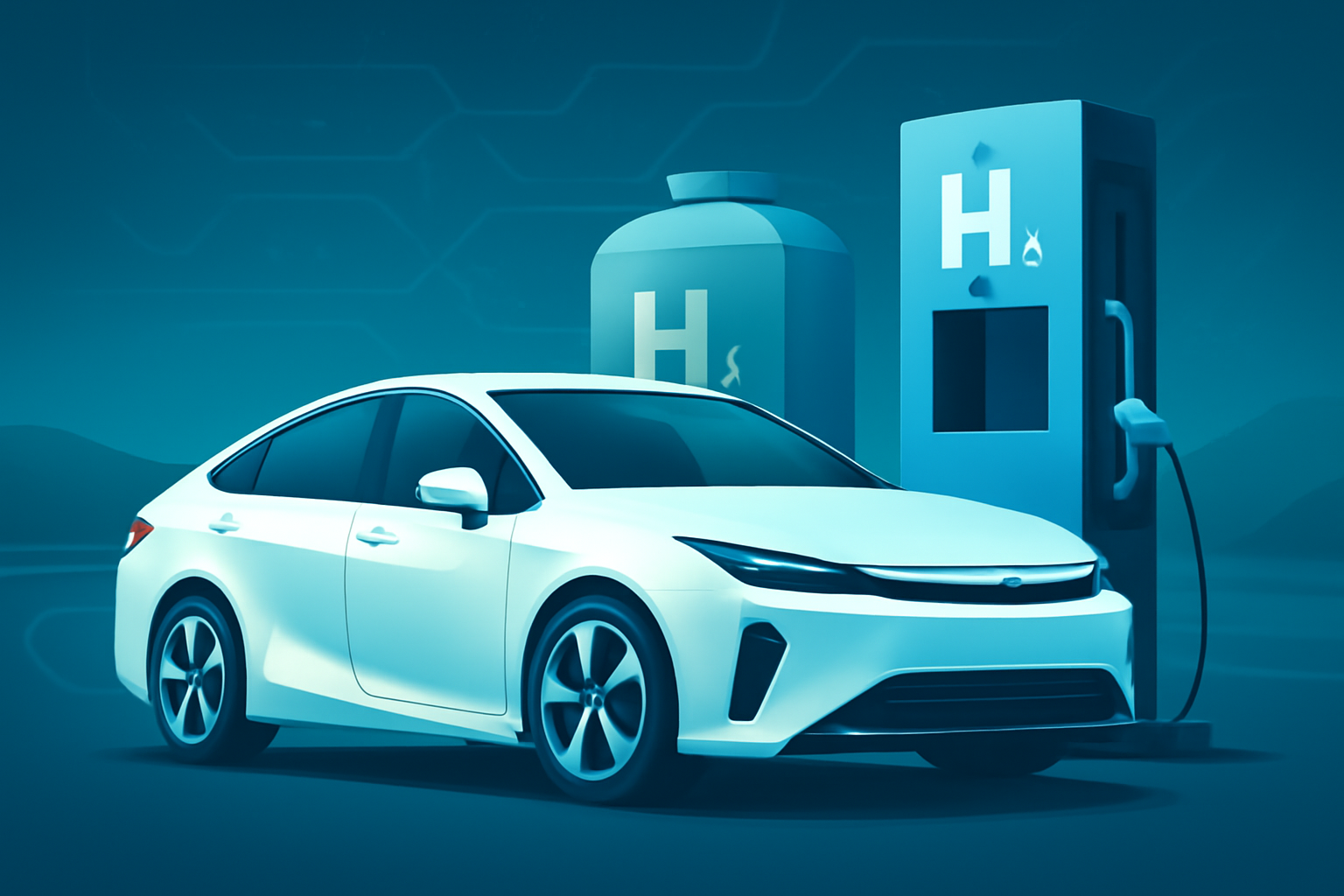A New Engine for Growth in the Auto Industry
As global governments intensify their climate pledges and consumers demand cleaner transport options, one of the most transformative sectors in mobility is quietly surging ahead: Fuel Cell Electric Vehicles (FCEVs). Often overshadowed by battery-electric vehicles (BEVs), FCEVs are now poised to make a major leap.
According to a new market intelligence report cited by Yahoo Finance, the global FCEV market is projected to grow from $7.2 billion in 2025 to $50.8 billion by 2034, representing an impressive compound annual growth rate (CAGR) of 24.3%. Behind this surge lies a robust push toward hydrogen infrastructure, innovation in vehicle technology, and rising demand for longer-range, faster-refueling clean vehicles.
For investors, this signals a long-term, high-growth opportunity in an emerging green industry that could reshape energy, transportation, and manufacturing.
Why This Matters for Investors
The evolution of the clean transportation space is no longer just about battery-powered cars. Fuel cell technology offers unique advantages, particularly in commercial transport, where quick refueling and extended range are paramount.
“Hydrogen fuel cell vehicles may be better suited for heavy-duty applications such as freight and transit due to their scalability and rapid refueling,” said Paul Browning, CEO of Mitsubishi Power Americas, in a recent BloombergNEF interview.
Notably, Toyota, Hyundai, and Honda are leading the FCEV charge in passenger vehicles, while Nikola, Hyzon Motors, and Ballard Power Systems are advancing in the commercial trucking space. The strategic backing of these automakers, paired with supportive policy shifts across the U.S., Europe, and Asia, suggests this is more than a niche trend — it’s a new industrial frontier.
Core Market Drivers: The Fuel Behind the Surge
1. Hydrogen Infrastructure Development
Governments and energy giants are investing heavily in the infrastructure needed to produce, store, and distribute hydrogen fuel. According to the International Energy Agency (IEA), global planned hydrogen investments have surpassed $500 billion, including $9.5 billion in direct funding from the U.S. Hydrogen Hubs program, which will power both industrial applications and fuel cell mobility.
2. Government Incentives and Policy Support
The U.S. Inflation Reduction Act and Europe’s Fit-for-55 legislation include tax credits and subsidies for hydrogen vehicle deployment and fueling infrastructure. California, for instance, is expanding its hydrogen station network as part of its zero-emission transport targets for 2035.
3. Industrial and Fleet Demand
FCEVs are gaining traction in logistics and transit fleets, especially where payload weight and operational uptime are critical. Amazon and Walmart are both piloting hydrogen fuel cell trucks to improve efficiency in long-haul and fulfillment operations.
4. Technological Advancement
The cost of producing hydrogen from renewable sources (green hydrogen) is falling, while fuel cell stack efficiency has improved by over 30% since 2020, according to McKinsey & Company. This has made the unit economics of FCEVs more favorable for mass adoption.
Future Trends to Watch
- Hydrogen Portfolios in Energy Companies: Shell, BP, and TotalEnergies are positioning themselves as future hydrogen suppliers. Investors should monitor these developments for diversified energy exposure.
- Hydrogen ETFs and Green Infrastructure Funds: Funds like Global X Hydrogen ETF (HYDR) or Defiance Next Gen H2 ETF (HDRO) offer direct exposure to the fuel cell value chain.
- Asia-Pacific Leadership: Japan and South Korea are leading in FCEV adoption. Hyundai aims to produce 700,000 hydrogen vehicles annually by 2030. Investors should not overlook Asia-based supply chains and innovators.
Key Investment Insight
The projected 7X growth of the FCEV market over the next decade represents a rare convergence of policy, innovation, and market demand. Investors with a long-term horizon may find value in early-stage hydrogen infrastructure firms, fuel cell manufacturers like Plug Power, Ballard Power Systems, and vehicle makers with hydrogen commitments.
While short-term volatility and infrastructure gaps persist, first-mover advantage in hydrogen may yield significant upside — especially as institutional capital begins flowing into green industrial strategies.
Stay Ahead with MoneyNews.Today
As clean energy transitions gain speed, hydrogen is emerging as a core pillar of tomorrow’s mobility and energy economy. From industrial trucks to urban transit, the FCEV market is rapidly accelerating—and so are the opportunities it presents.
Stay informed with MoneyNews.Today — your source for real-time investment insights in emerging technologies, global markets, and tomorrow’s high-growth sectors.





